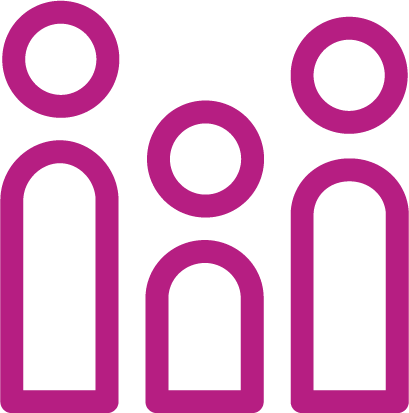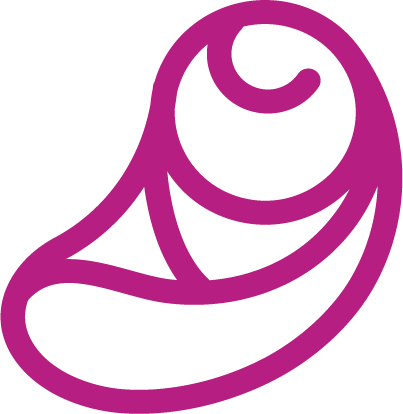The NHVRC used data from 15 models recognized as evidence based by the Home Visiting Evidence of Effectiveness (HomVEE) project to create a national profile of home visiting in 2018.
National Profile
Race
3% American Indian Alaska Native
3% Asian
23% Black
<1% Native Hawaiian Pacific Islander
61% White
6% Multiple
3% Another race
Ethnicity
30% Hispanic or Latino
Caregiver Education
31% No high school diploma
Child Age
29% <1 year
45% 1-2 years
26% 3-5 years
Child Insurance Status
83% Public
8% Private
9% None
Primary Language
76% English
19% Spanish
5% Another language
Notes
Models include 15 models operating in the United States in 2018 that met HomVEE criteria for evidence of effectiveness at that time: Attachment and Biobehavioral Catch-Up (ABC), Child First, Early Head Start Home-Based Option (EHS), Family Check-Up (FCU), Family Connects, Family Spirit, Health Access Nurturing Development Services (HANDS), Healthy Families America (HFA), Home Instruction for Parents of Preschool Youngsters (HIPPY), Maternal Early Childhood Sustained Home-Visiting (MECSH), Minding the Baby, Nurse-Family Partnership (NFP), Parents as Teachers (PAT), Play and Learning Strategies (PALS), and SafeCare/SafeCare Augmented. ABC, Child First, Family Connects, Family Spirit, HANDS, HFA, HIPPY, MECSH, Minding the Baby, NFP, PALS, PAT, and SafeCare/SafeCare Augmented provided data on the number of families served. ABC, Child First, EHS, Family Spirit, HANDS, HFA, HIPPY, Minding the Baby, NFP, PALS, and PAT provided data on the number of children served. ABC, Child First, Family Spirit, HANDS, HFA, HIPPY, MECSH, Minding the Baby, NFP, PALS, PAT, and SafeCare/SafeCare Augmented provided data on the number of home visits completed. Child First, EHS, HANDS, HFA, HIPPY, Minding the Baby, NFP, PAT, and SafeCare/SafeCare Augmented provided participant demographic data.
Ethnicity includes data from Child First, EHS, HANDS, HFA, HIPPY, Minding the Baby, NFP, PAT, and SafeCare/SafeCare Augmented. Child First, HANDS, HFA, HIPPY, Minding the Baby, NFP, PAT, and SafeCare/SafeCare Augmented reported ethnicity for adult participants. EHS reported ethnicity for children and pregnant caregivers.
Race includes data from Child First, EHS, HANDS, HFA, HIPPY, Minding the Baby, NFP, PAT, and SafeCare/SafeCare Augmented. Child First, HANDS, HFA, HIPPY, Minding the Baby, NFP, PAT, and SafeCare/SafeCare Augmented reported race for adult participants. EHS reported race for children and pregnant caregivers.
Educational attainment includes data from Child First, EHS, HANDS, HFA, HIPPY, Minding the Baby, NFP, and PAT.
Child age includes data from Child First, EHS, HANDS, HFA, HIPPY, Minding the Baby, NFP, and PAT.
Child insurance status includes data from Child First, EHS, HANDS, HFA, HIPPY, NFP, and PAT. Public insurance includes Medicaid, Children’s Health Insurance Program (CHIP), and TRICARE.
Primary language includes data from Child First, EHS, HFA, HIPPY, NFP, and SafeCare/SafeCare Augmented. EHS reported primary language for children and pregnant women. SafeCare/SafeCare Augmented reported languages spoken in the home. Child First, HIPPY, and NFP reported primary language of children. HFA reported primary language of adult participants.
Maternal, Infant, and Early Childhood Home Visiting Program
The Maternal, Infant, and Early Childhood Home Visiting Program (MIECHV) demonstrates a significant federal investment in evidence-based home visiting (Source: MIECHV families are a portion of total families served by evidence-based models, but because of the way data are collected (aggregated across all models in MIECHV reporting, with promising approaches included), the overlap between model data and MIECHV data cannot be determined.)Go to footnote #>1 but does not account for all families reached. MIECHV awardees are required to report data annually to the U.S. Department of Health and Human Services about the families they serve. We contacted states and territories to request this information, and most (54 of 56) shared it with us. Supplemented with publicly available data from the Health Resources and Services Administration, we calculated the extent of MIECHV-funded services in 2018.
State and territory MIECHV awardees served 75,564 families and 69,409 children (Source: Data on children served are not publicly available, so this count is based on the data shared by 54 of 56 states and territories.)Go to footnote #>2 and provided 934,228 home visits in 2018. (Source: The models represented in the MIECHV numbers are Child First, EHS, FCU, Family Spirit, HANDS, HFA, HIPPY, NFP, PAT, SafeCare/SafeCare Augmented, and promising approaches. Promising approaches include Following Baby Back Home, Maternal Infant Health Outreach Worker Program, and Team for Infants Exposed to Substance abuse Program.)Go to footnote #>3 Tribal MIECHV awardees served an additional 1,801 families and 1,810 children and provided 17,972 home visits in 2018.
Families Served Through MIECHV: State and Territory Awardees
Families Served Through MIECHV: Tribal Awardees
Families Served by Tribal-Led Organizations
Home visiting services were provided to families in 25 tribal communities through Tribal MIECHV funds in 2018. Families in tribal communities also receive home visiting through non-MIECHV funded programs. For the 2019 Home Visiting Yearbook, we asked evidence-based models to identify programs led by tribal organizations, regardless of funding source. Five models provided data on home visiting services provided by tribal-led organizations. (Source: Models that provided tribal-led organization data include EHS, Family Spirit, HFA, NFP, and PAT.)Go to footnote #>4
In 2018, more than 4,100 families and 3,900 children were served by 91 tribal-led organizations. In total, more than 29,900 home visits were provided. These data, coupled with information about families served by Tribal MIECHV awardees, begin to convey the reach of evidence-based home visiting in tribal communities.



